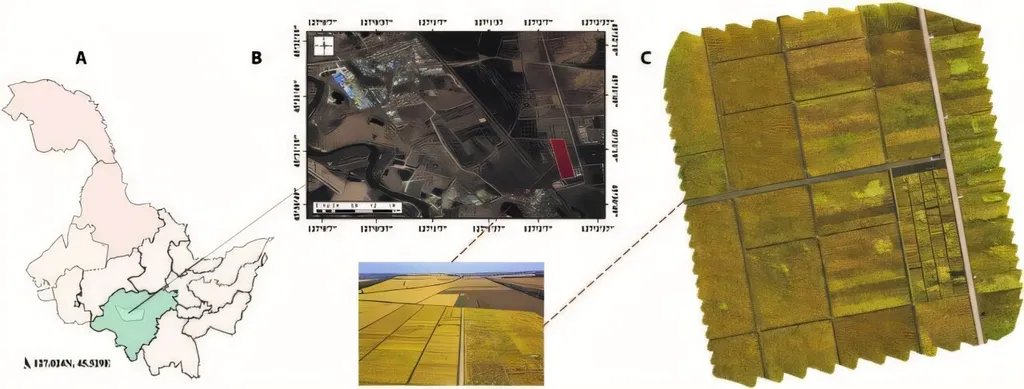In the heart of China’s Heilongjiang province, researchers are pioneering a technological leap that could revolutionize rice farming and bolster agricultural efficiency. Chunyou Guo, a scientist at the College of Information and Electrical Engineering, Heilongjiang Bayi Agricultural University, has led a team to develop a cutting-edge model named SWRD–YOLO. This innovation is set to transform how farmers monitor and manage rice lodging—a critical issue that impacts crop yield and harvesting efficiency.
Rice lodging, where crops bend or fall over before harvest, is a significant challenge in agriculture. It not only hampers mechanized harvesting but also reduces crop yield and quality. Traditional methods of detecting and quantifying lodging areas are often labor-intensive and time-consuming. Enter SWRD–YOLO, a lightweight instance segmentation model designed to address these challenges head-on.
Using Unmanned Aerial Vehicles (UAVs), the model captures high-resolution images of rice fields and employs advanced convolution and attention mechanisms to enhance feature extraction and fusion. “Our model is designed to work in real-time, providing farmers with immediate and accurate assessments of lodging severity,” Guo explains. This capability is crucial for precision agriculture, enabling timely interventions that can mitigate losses and improve overall crop management.
The SWRD–YOLO model stands out for its precision and efficiency. Evaluated on a self-built rice lodging dataset, it achieved impressive metrics: 94.8% precision, 88.2% recall, 93.3% [email protected], and 91.4% F1 score. These results represent significant improvements over the baseline YOLOv8n-seg model, with increases of 8.2% in precision, 16.5% in recall, and 12.8% in both [email protected] and F1 score. The model’s real-time inference capability, achieving 16.15 FPS on an embedded NVIDIA Jetson Orin NX device, makes it particularly suitable for edge deployment in agricultural settings.
One of the key innovations of the SWRD–YOLO model is its grid-based lodging ratio estimation method. By dividing images into fixed-size grids, the model calculates local lodging proportions and aggregates them for a robust overall severity assessment. This approach ensures that even in complex backgrounds and variable lighting conditions, the model can accurately detect and quantify lodging areas.
The implications of this research are far-reaching. For farmers, the ability to quickly and accurately assess lodging severity can lead to more informed decision-making, ultimately improving crop yield and harvesting efficiency. For the agricultural industry, the deployment of such advanced technologies can drive precision agriculture forward, making farming practices more sustainable and efficient.
As Guo notes, “Our goal is to provide farmers with tools that can help them manage their crops more effectively. By leveraging advanced technologies like SWRD–YOLO, we can contribute to the development of intelligent crop monitoring systems that support sustainable agriculture.”
Published in the journal ‘Agriculture’ (translated from Chinese as ‘Nongye’), this research highlights the potential of lightweight deep learning models in agricultural applications. The model’s success paves the way for future developments in edge AI deployment, efficient inference, and real-time monitoring systems. As the agricultural sector continues to evolve, innovations like SWRD–YOLO will play a pivotal role in shaping a more efficient and sustainable future for farming.

